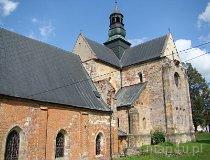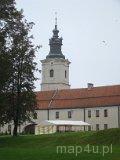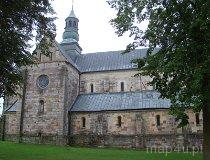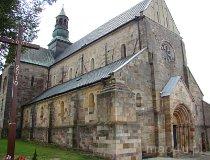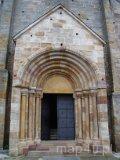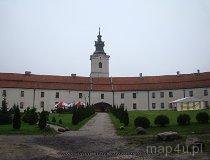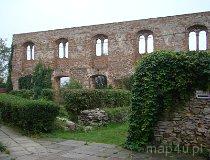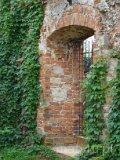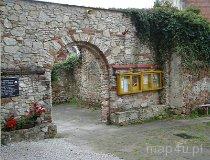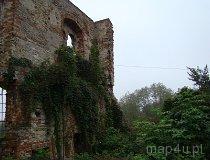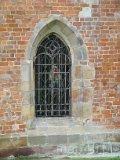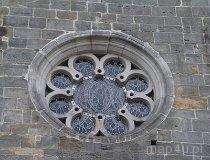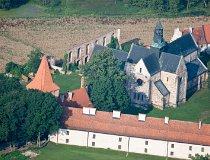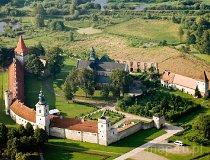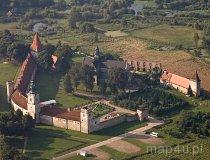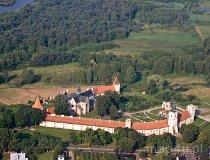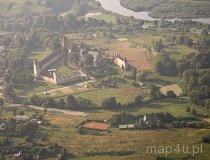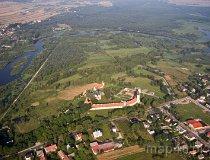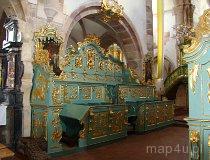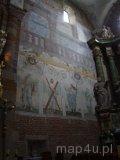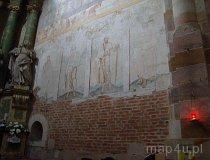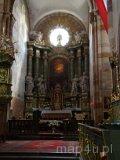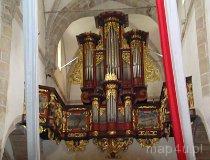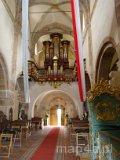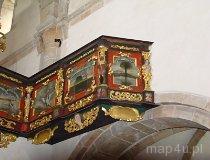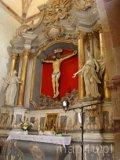Cistercian abbey complex in Sulejów
Description
The Cistercian abbey consists of two parts: the late Romanesque church and the monastery buildings: the part of the east wing of the monastery with well-preserved sacristy and chapter house, the defensive walls, the ruins of the west and south wings, the arsenal, the outbuildings and the living quarters.
The central part of the complex is the late Romanesque St Thomas of Canterbury’s Basilica made of sandstone from Szydłowiec. It is a three-nave cruciform temple with baroque interior and wall paintings. The characteristic element is the lack of a tower. There is only a ridge turret.
The lovers of architecture will be enthralled by the number of details: the tympanum, numerous rose windows and archivolt portal. Small museum exhibition of sacred items can be found in the chapter house with a gothic cloister, which is a gem of architecture of the whole complex.
The abbey is surrounded by defensive walls with gates and towers, based on an irregular polygonal design. They were erected in the 14th-16th centuries. Then the residential buildings and outbuildings were constructed within the walls.
At present, in the complex there are a hotel, a restaurant and a museum, where the visitors can see memorabilia connected with the history of the abbey.
Date or time of building
1176 r. (XII w.)
Date or time of building
1176
The 12th century.
Building material
Sandstone, brick.
History
The abbey was founded in 1176 by Casimir the Just who, when hunting in the area, felt enchanted by the beauty of the surrounding forests and decided to bring there the convent of French Cistercians. In the period of its prosperity, the abbey was visited by kings and dukes, including Ladislaus Jagiello, who stopped there when travelling to nearby Wolbórz to inspect the knighthood gathering before the battle of Grunwald in 1410.
Tatar invasions caused that the abbey was surrounded by fortifications with towers and gates. However, despite all those measures, it was plundered during the Swedish invasion of Poland in 1655-1660.
In 1819 the convent was dissolved and the buildings fell into ruin. The Cistercians did not return there until 1986, when the old glory of the abbey was restored at least to some extent.
Curious details
The Cistercian convent was created as a faction of the Benedictines. The motto of the monks was “Ora et labora,” meaning “ Pray and work.” They were dedicated to physical work and contemplation. Their lifestyle caused that the convents converted into efficient farmsteads.
The monks from Sulejów developed the farming in the region, taking advantage of the local limestone soil and the large sun exposure of the slopes along the River Pilica. Even grapevine used to be grown there.
Form of legal protection
The entries in the regional heritage register:
- Cistercian abbey complex in Sulejów, registry number: 569 from 1971-09-16
- Cistercian abbey complex in Sulejów, registry number: 429 from 1992-08-17
Object location
The complex is located in Sulejów, in the Podklasztorze district, to the east of the River Pilica.
To get there, you have to take the highway linking Piotrków Trybunalski to Opoczno and turn into the north after crossing the bridge on the Pilica. Then follow the signposts.
Accessibility
All year round.
Sources, links
- Glinka, T., M. Piasecki, R. Szewczyk and M. Spała. Cuda Polski – Miejsca, Które Musisz Zobaczyć. Poznań: Publicat.
- Krygier, M. Turystyczna Encyklopedia Polski. Bielsko-Biała: Pascal, 2007.
- Mokras-Grabowska, J. and P. Rzeńca. Województwo Łódzkie – Przewodnik Turystyczny. Łódź: ROTWŁ, 2007.
- www.sulejow.cystersi.pl
Owner, manager
The parish belongs to the Tomaszów deanery of the Radom diocese. The church part of the building is managed by the Cistercian convent.




